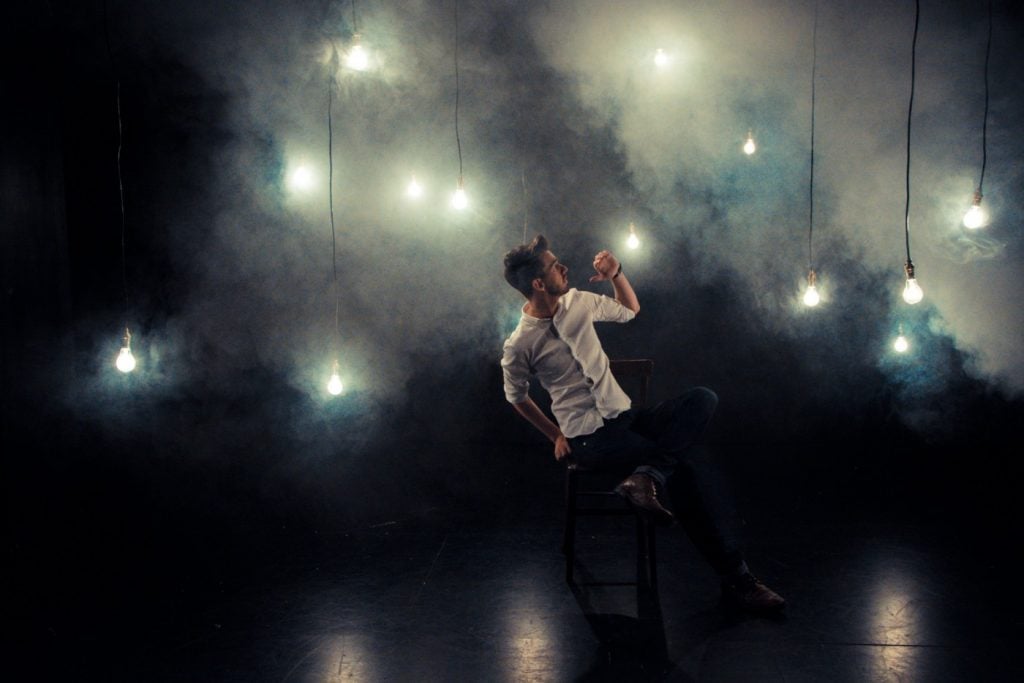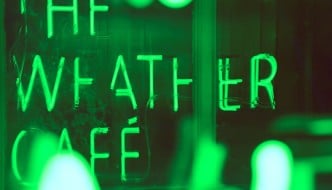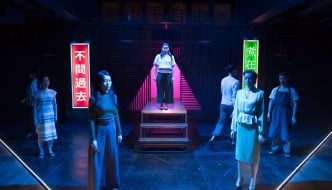Multimedia artist David Shearing: “I like to create spaces for an encounter”
November 8, 2017

Photo Credit: David Shearing
So, Black Rock, what is it about, and where did the project evolve from?
The project was born out of an idea between Kendal Mountain Festival and Professor Jonathan Pitches at the University of Leeds. Both were exploring how performance can play a role in the telling of mountain narratives. They wanted to commission a new piece of practice to mark a particular climb – Indian Face (E9 6c) by Johnny Dawes, which set a new bar for British climbing in the 1980s. I’ve always had an interest in landscape and weather, and the idea of exploring mountains as both a physical place and a philosophical concept really appealed.
The team – Leeds-based interactive arts company Invisible Flock, yourself, James Bulley, Claire Carter & Carlos Pons Guerra – this is a formidable group. How did the collaboration work? Was it led or formulated together?
James is a long-time collaborator and together we work in a really specific way. All the sound is composed for the piece across 16 channels. The aim is to draw the audience into the world of the performance. It is about the details and the subtle, reflective nature of the sound. James is a unique talent in this regard. Claire Carter has written the text for the piece, which is akin to one long poem that weaves through the performance landscape. We were introduced through Kendal Mountain Festival. For each larger collaborative project, I love to explore the possibilities of technology. For Black Rock I wanted light to play a key role in the experience. Johnny Dawes talks about the electric atmosphere of Snowdon and the ‘radiant grip’ of the rock. My studio space at East Street Arts is right next to Invisible Flock, who have helped build and develop the light sculpture. As this piece was about climbing, I wanted to bring performers into the piece. Carlos has been making work in Leeds and internationally for years. He has a flare for storytelling and we chatted about how we could play with translating the vertical to the horizontal.
This, The Weather Café, your other works: what drives them?
One of the main things that drives the work is the audience. Whether it’s the Café, participation projects or theatre experiences, the audience is central to the experience. The works aren’t interactive but I like to create spaces for an encounter. By providing specialised environments, I hope to develop spaces that allow us the time to be reflective – on how we relate to each other and our environments.
Is there a common thread running through your work as you see it?
One central concept is the treatment of design materials – such as sound, light, wind, haze and objects – almost as performers in their own right. Often art reduces materials to static things, which is why I dislike the term ‘set design’, as it suggests a solid thing. Materials have a vibrancy, they move, they shape us and we shape them. I think this is fundamental to the way we experience the world. Often I think we lack empathy with the world about us and art, for me, allows us to reconnect. In Black Rock we explore this through notions of what is solid, what is rock, and how we connect with it as humans.
How did your work begin and when did you sense it was heading towards the kind of work you’re doing at present?
I’ve been making work for fifteen years, but it has taken time for me to test ideas and to explore the subtle process of audience engagement. I moved to Leeds nine years ago to pursue research into performance design and audience immersion at the University of Leeds. It was my time here that shaped my thinking.
What is it that you feel like you do?
In essence, I create experiences. I provide a world and a framework for participants to engage with each other and materials. We make sense of the world through both the mind and body and for me artistic experience should do same. I think it allows us to open up to spaces and people in different ways.
Black Rock has been described as “a digital performance that explores the extraordinary desire of humans to move through mountains, to scale vertical walls and to seek new physical and intellectual heights.” In what sense are there parallels in climbing do you think, with the intellectual, or the forging ahead with less physical pursuits?
Through this project, climbing has unfolded as a deeply philosophical pursuit. There is certainly a desire from some to be the best, to get to the top, but the way it is done means totally different things to different people. Black Rock is a meditation on climbing, very much like the act itself. It is a mind-body process of risk, precision, skill and attunement. In many ways climbing is a creative act, the body in flow, making poetic forms, balletic and with a deep appreciation of rock, geology, landscape and weather. Both art and climbing test the threshold of what it means to be human; climbing has the added imperative of staying alive.
Why were you drawn to the project?
Despite having an interest in landscape and weather I spend much of my time in cities and this is referenced in the piece. But there is something primeval in the call of the mountains, the idea of getting lost, finding oneself, the epic nature of mountain forms and the tiniest of details in climbing making for the perfect combination. The piece uses Snowdon as place to set our scene and having the opportunity to explore a place and uncover its myths has been liberating for my work. Our intention is to tour the project, perhaps in different forms. There is large outdoor culture and mountain network which Kendal Mountain Festival have introduced us to. I have enjoyed the opportunity to bring different audiences together to tease out what similarities we have and what we can learn from different approaches to being and performance.
What other work are you doing at the moment?
Alongside the studio projects I have been exploring how design can intervene in the everyday to create wild, beautiful and magical artistic happenings as part of www.incredible-things.com. The next phase follows on from The Weather Café to build a new pop-up space in Leeds through the stories and histories of places that no longer exist.
Filed under: Art & Photography, Theatre & Dance
Tagged with: Black Rock, Carlos Pons Guerra, Claire Carter, climbing, David Shearing, Invisible Flock, James Bulley, mountains, multimedia artist


Comments